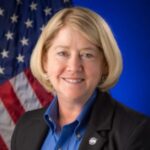Responsible exploration: Preserving the cosmos for tomorrow
NASA Deputy Administrator Pam Melroy unveiled the agency’s new Space Sustainability Strategy at the 39th Space Symposium in Colorado Springs, CO.
“Here’s the challenge with all these new entrants, all this new activity, all these new capabilities: We’re making it actually harder on ourselves by not having a comprehensive framework that we can all share and not just the things we’re doing today, but make sure that space is sustainable and available for all of us in the future,” she said.
Melroy explained there are about 11,800 spacecraft around the Earth, but only 9,800 are operational. That means 18,000 debris objects at least 10 centimeters in size are cruising around our planet, along with more than 100 million others that are a diameter of a millimeter or more.
“What about this is so hard? Why is this so hard? Why have we struggled to make the right steps in this area? And how can we approach and embrace the complexity going forward?” Melroy asked.
The Space Environmental Sustainability Advisory Board has been tasked with developing a whole of agency, cross-agency strategy to leverage NASA’s mission as a science and technology organization to address the biggest challenges.
“Goal one is the framework,” Melroy said. “The second goal is critical uncertainties. Goal three is about technology investments, something most people would think should be first.”
NASA has already started to address these goals, with $18 million worth of work in the 2024 budget. The agency also announced its intent to hire a director of space sustainability who will have responsibility for integrating and executing this strategy.
In her closing, Melroy offered an assessment shared by many others at Symposium.
“I said it before and it’s worth repeating,” she said. “Space is busy.”
